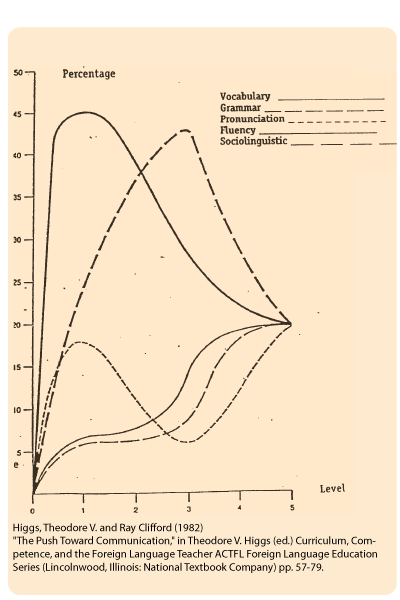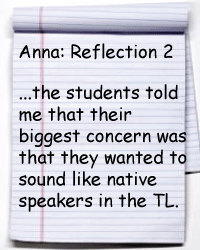Higgs' Graph of Learner Needs
 Learning a language can be a difficult endeavour. Students have varied needs when it comes to learning a language and teachers need to be aware of what these needs are and how to meet them. Worry commonly arises for many language students with regards to oral presentations; students want to be able to speak like native speakers. Depending on the language ability level of the students, it is important for the teacher to stress to students that pronunciation is important but that producing language like that of a native speaker isn’t necessary. How can teachers best meet the needs of students at different phases of their language learning process? Learning a language can be a difficult endeavour. Students have varied needs when it comes to learning a language and teachers need to be aware of what these needs are and how to meet them. Worry commonly arises for many language students with regards to oral presentations; students want to be able to speak like native speakers. Depending on the language ability level of the students, it is important for the teacher to stress to students that pronunciation is important but that producing language like that of a native speaker isn’t necessary. How can teachers best meet the needs of students at different phases of their language learning process? |
|
Why is it important to understand student needs?
Understanding students’ needs is key to developing a successful language program. In today’s classrooms there is a diverse range of students and therefore assessing and meeting students’ needs can often pose a challenge for teachers. Not only do teachers need to consider students’ needs in relation to their varied backgrounds, personalities and interests but also in relation to their ability level within a language.
 What does the research say?
What does the research say?
Although the research on learner needs varies from researcher to researcher, more often than not the research suggests that learners’ needs change throughout the learning process. Higgs puts forward one model of viewing learner needs by charting the evolution between Beginners, Intermediate learners and Advanced learners.
Higgs shows how students’ needs change over the course of learning a language:
-
Needs of Beginner learners include: Pronunciation, Vocabulary, Grammar
-
Needs of Intermediate learners: Grammar, Vocabulary, Situational Language
-
Needs of Advanced learners: A balance of all five
This graph demonstrates the importance of monitoring student progress and student needs at different stages of learning. In order to better understand Higgs' Graph of Learner Needs complete the activity below.
 |
|
How does the research apply to Second Language Teaching?
back to top

Higgs, Theodore V. and Ray Clifford (1982) "The Push Toward Communication," in Theodore V. Higgs (ed.) Curriculum, Competence, and the Foreign Language Teacher ACTFL Foreign Language Education Series (Lincolnwood, Illinois: National Textbook Company) pp. 57-79.



